Busiate of ancient Sicilian grains, handmade, are a type of pasta typical of the Sicilian culinary tradition, particularly from the Trapani area.
They are distinguished by their elongated and twisted shape, traditionally obtained by rolling small pieces of dough around a thin stem of buso, a local reed.
Today, for reasons of hygiene it is made of steel.
Distinctive characteristics:
Ancient grains:
They are made with native Sicilian durum wheats, such as Russello, Tumminia, or Perciasacchi, with a low glycemic index.
These grains, cultivated using traditional methods, give the pasta a unique flavor and texture.
Ancient grains are known for their high nutritional value, rich in fiber, and better digestibility compared to modern grains.
Artisanal processing:
The pasta is often bronze-drawn, giving it a rough and porous surface, ideal for holding sauces.
Slow drying at low temperatures preserves the organoleptic properties of the grains, ensuring a high-quality product.
Flavor and texture:
Busiate of ancient grains have an intense and characteristic flavor, with notes of ripe wheat and a slight sweetness.
Their texture is al dente, with a pleasant chewiness.
Made for you:

- Cost: Very economical
- Rest time: 30 Minutes
- Preparation time: 1 Hour
- Portions: 4
- Cooking methods: Boiling
- Cuisine: Italian
- Seasonality: All seasons
- Energy 223.75 (Kcal)
- Carbohydrates 40.63 (g) of which sugars 0.94 (g)
- Proteins 6.88 (g)
- Fat 2.60 (g) of which saturated 0.17 (g)of which unsaturated 0.00 (g)
- Fibers 5.25 (g)
- Sodium 98.40 (mg)
Indicative values for a portion of 100 g processed in an automated way starting from the nutritional information available on the CREA* and FoodData Central** databases. It is not food and / or nutritional advice.
* CREATES Food and Nutrition Research Center: https://www.crea.gov.it/alimenti-e-nutrizione https://www.alimentinutrizione.it ** U.S. Department of Agriculture, Agricultural Research Service. FoodData Central, 2019. https://fdc.nal.usda.gov
Ingredients
Let’s go shopping
- 2 cups wholemeal Tumminia flour (Russello or Perciasacchi or wholemeal semolina)
- 2/3 cup water
- Half teaspoon salt (level)
- 2 teaspoons extra virgin olive oil
Busiate of ancient Sicilian grains
Tools
What we need to prepare
- 1 Pastry board
- 1 Mixer or Bimby
- 1 Pasta Cutter
- 1 Rolling pin
- 1 Tray
- 1 Rod 3 mm diameter
Steps
To prepare
Start by pouring the flour onto a pastry board or directly into the bowl of your mixer. Pour the water, salt, and oil in the center and start kneading,
Initially, you will have a slightly grainy mixture,
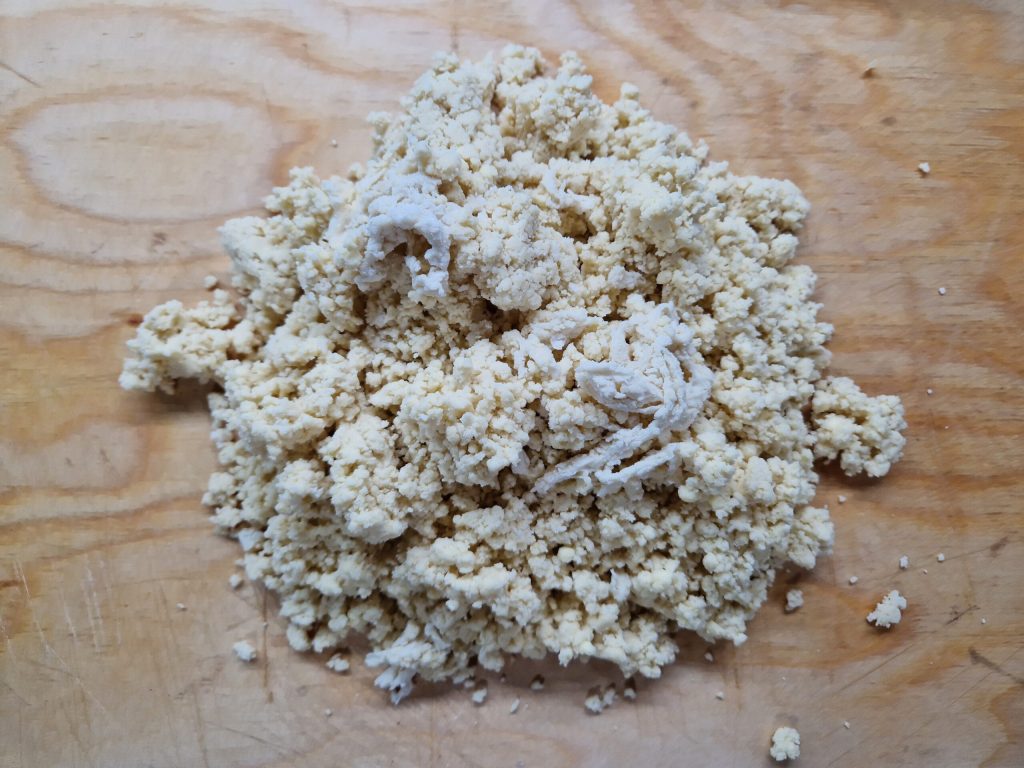
Then as the gluten network forms, the mixture will be nice and homogeneous.
Cover it with a cloth and let it rest for 30 minutes.
After the time has passed, prepare the buso, i.e., the rod for the busiate and the rolling pin

With the rolling pin, slightly flatten the dough and then cut sticks with the pasta cutter.

Then you will flatten them to make strips 3 fingers high and 1/8 inch thick.
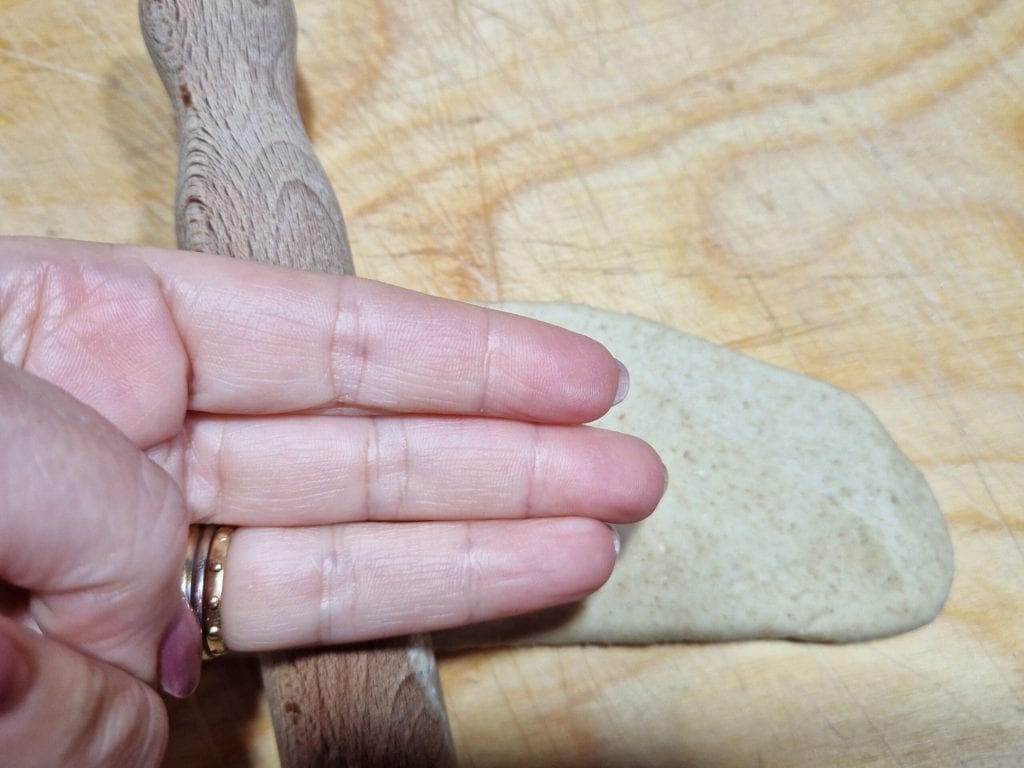
Still using the pasta cutter, cut strips about 1/16 inch wide,
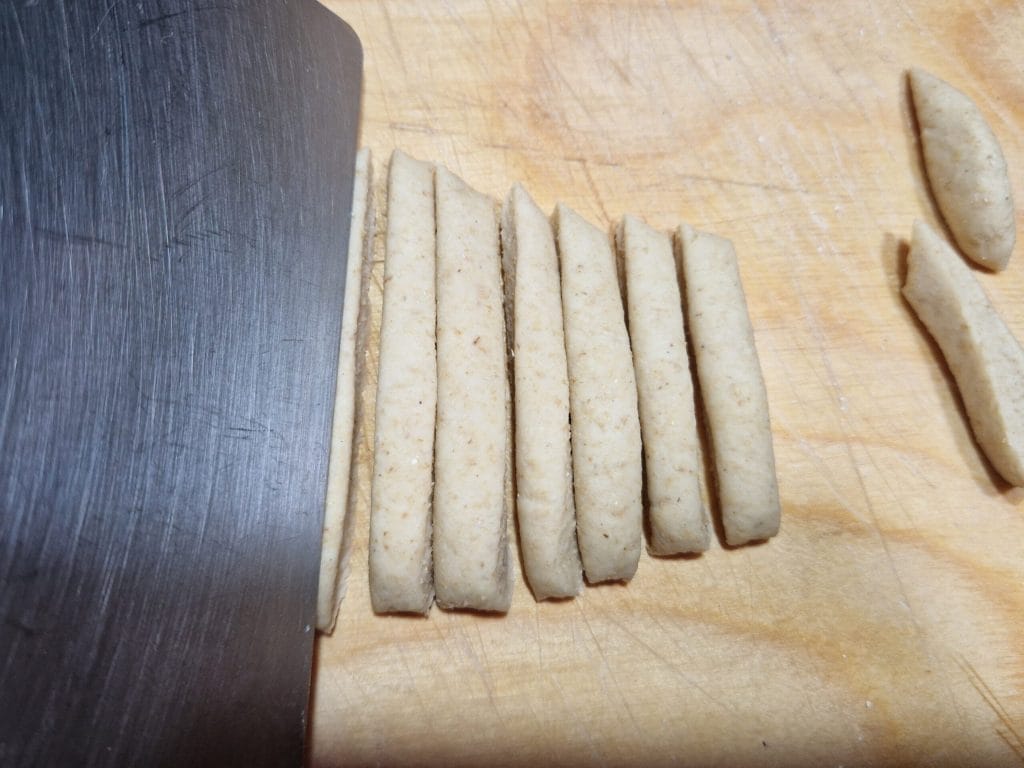
Now they are all cut.
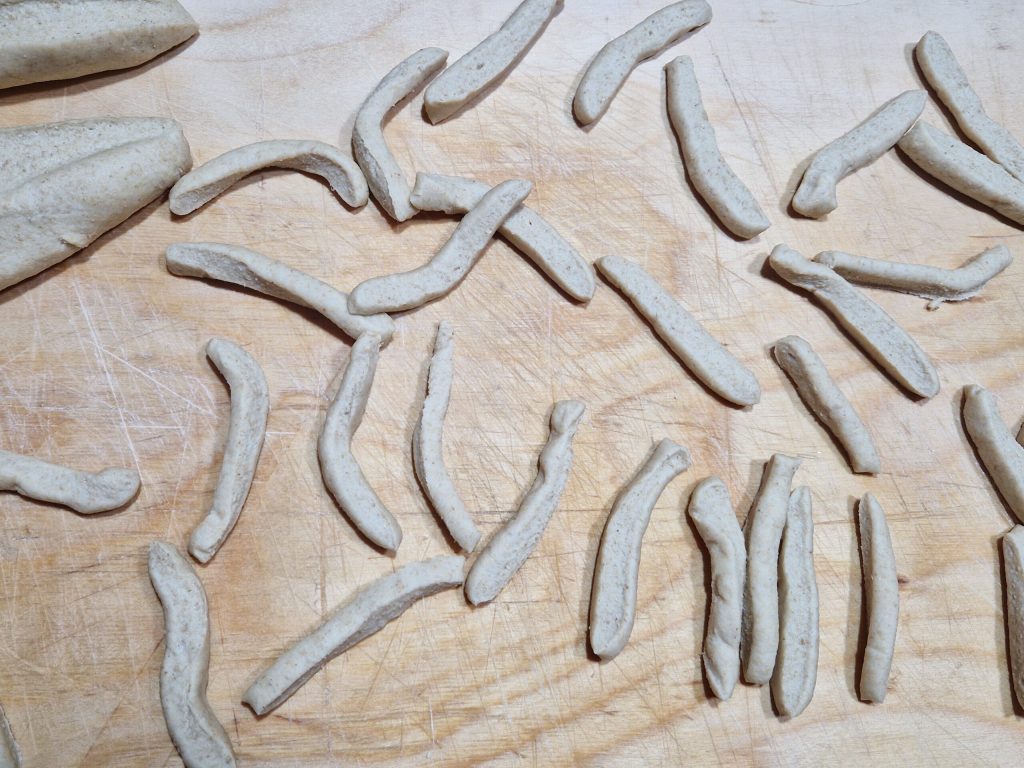
Take the rod and use your index and thumb to start twisting the tip of the busiata,

then continue twisting as shown in the photo.
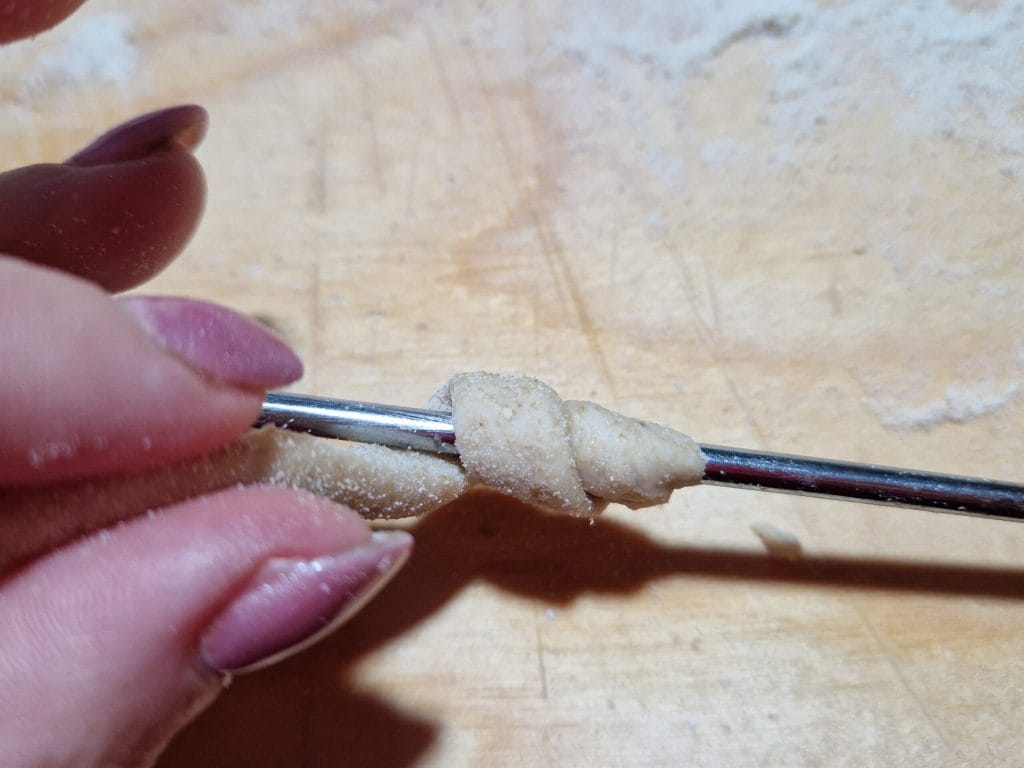
Here it is all twisted, now slightly seal the end,

Place the rod at the base of your fingers.
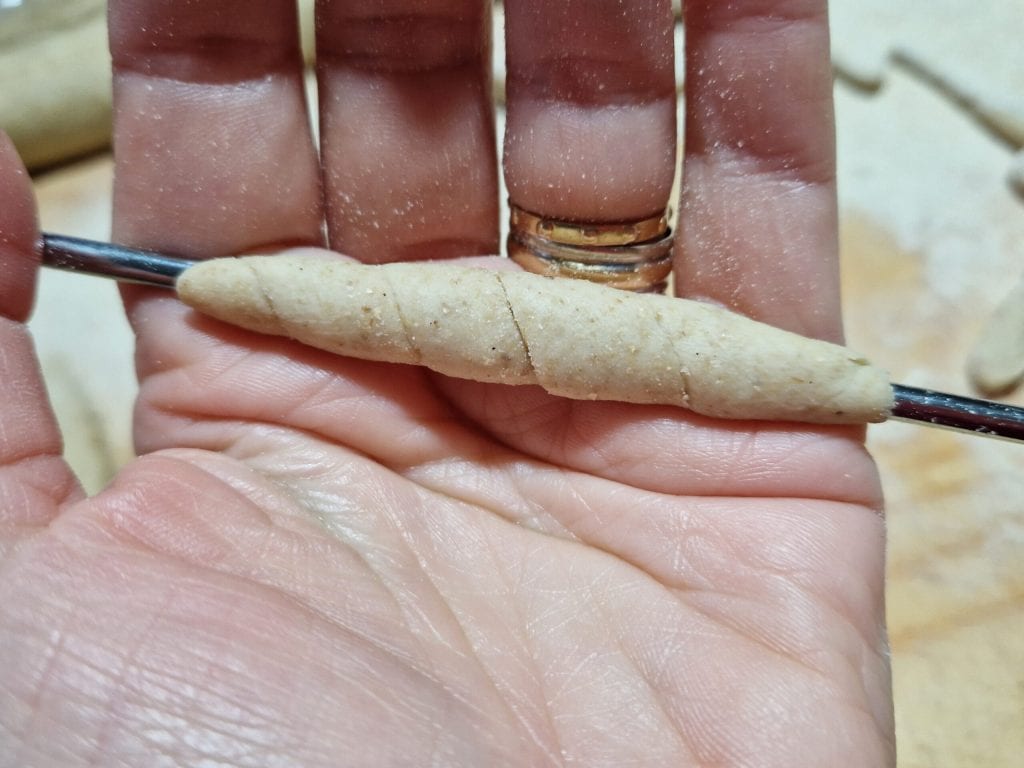
Place the other hand on top

and move your hand back and forth over the other, applying very light pressure.
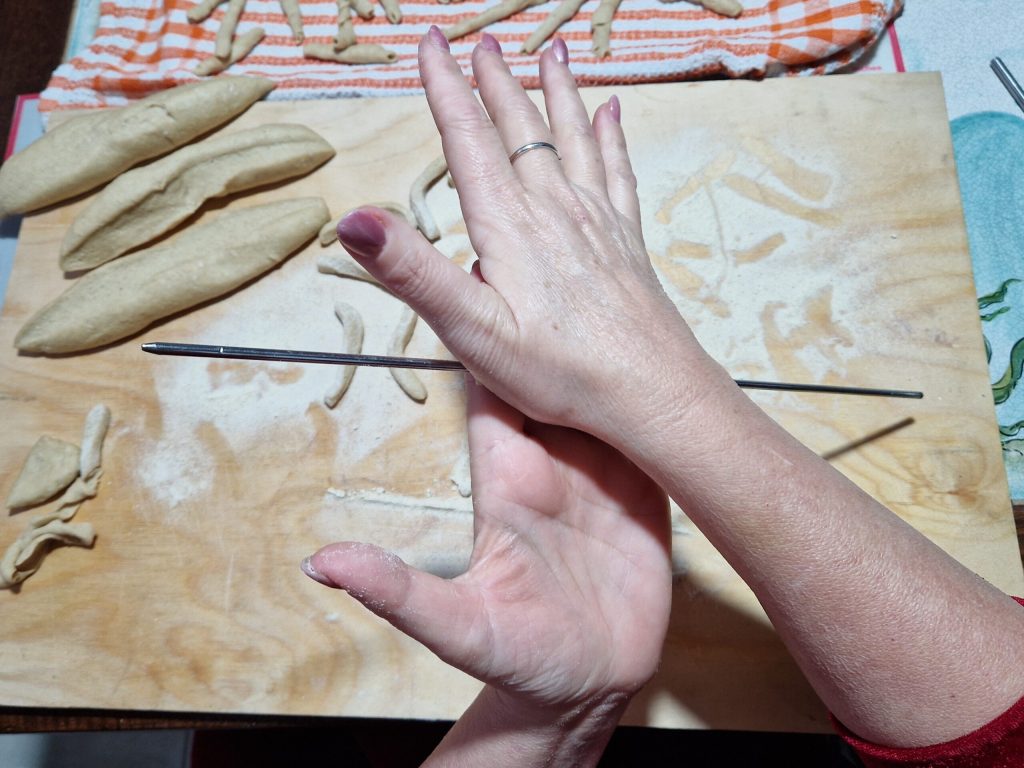
Then with one hand, take the bottom end of the rod and with the other, gently slide the busiata off the rod.

Sliding the rod until the busiata comes off.
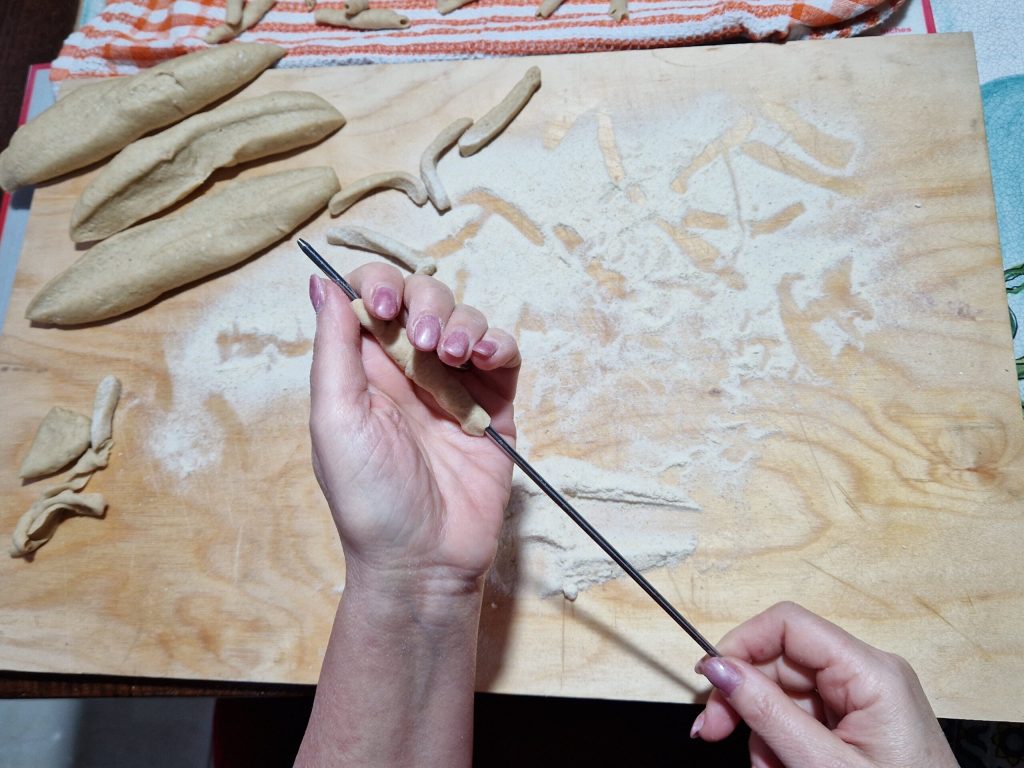
Here is the first one

Now let’s do the rest.

Cooking: Put a pot on the stove with the salt and as soon as it comes to a boil, add the busiate.
They will cook al dente in 5 minutes or as soon as they float to the surface. Then drain them and dress them as you like best.

Busiate of ancient Sicilian grains, can also be stored for 2 days covered with a cloth, or they can be frozen well distributed on a tray until hardened and then transferred into bags.
When cooking, they should be placed directly frozen into boiling water.
Pairings
Pairings:
They are ideal for rich and flavorful sauces, such as Sicilian pesto, meat ragù or fish sauces.
They are also very commonly used with typical Sicilian vegetable sauces, such as norma sauce.
Sustainability Benefits
Benefits of ancient grains:
Better digestibility: thanks to the low gluten content and the presence of fiber.
Rich in nutrients: they contain more vitamins, minerals, and antioxidants compared to modern grains.
Sustainability: the cultivation of ancient grains is more environmentally friendly, as it requires fewer inputs of fertilizers and pesticides.
Busiate of ancient Sicilian grains represent an excellence of Sicilian gastronomy, a product that embodies history, tradition, and authentic flavors.
FAQ (Frequently Asked Questions)
Busiate of Ancient Sicilian Grains

